Re-imagining Physical Cork:
The first decade of the twenty-first century coincided with an overhaul of St Patrick’s Street as a central urban space. Designed by Spanish architect, Beth Gali, it became a central retail and business quarter, worthy of a European regional capital.
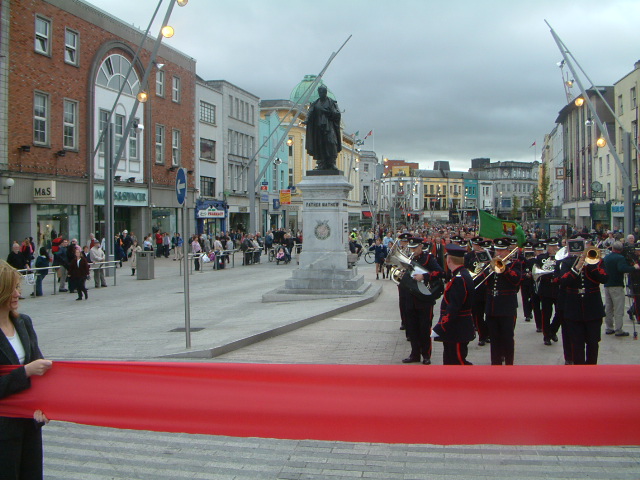
Spanish architect Beth Gali also oversaw a €4 million revamp of Oliver Plunkett Street. Gali was also responsible for the planned €5 million transformation of Cornmarket Street. Work on a €10 million new streetscape for Grand Parade finished in late 2007.
Furthermore, the Cork Docklands Project, commissioned by Cork City Council, became a working template to create a new urban quarter in Cork, one where a vibrant mix of residential and non-residential sites would be present.
In 2007, the opening of new hotel and office accommodation at Cork’s City Quarter on Lapps Quay heralded a shift in policy towards encouraging decision-makers to see the Docklands as an attractive business location.
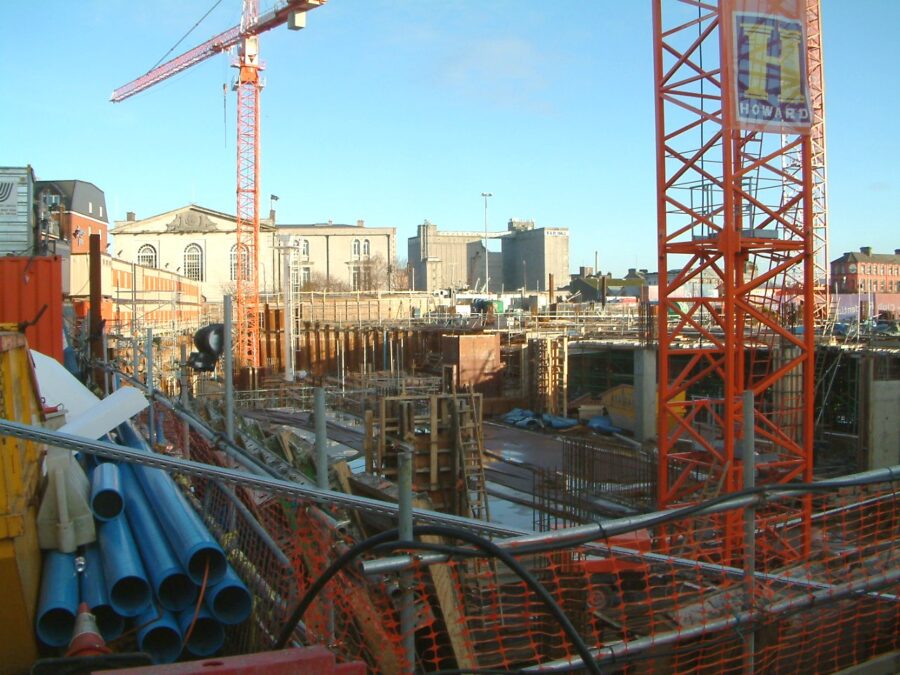
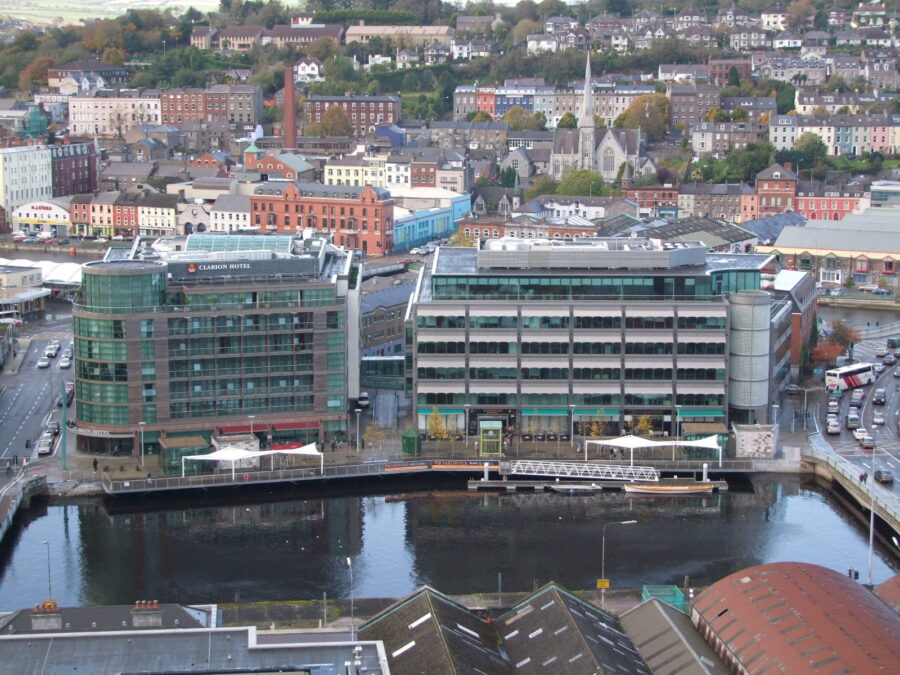
Heralded as another marker in the Docks redevelopment was the construction of the Elysian Tower. On 8 December 2006, the final section of the lift shaft of the 72-metre high Elysian apartment tower in Cork city centre was put into place. Designed by Frank O’Mahony Architects, the Elysian Tower is 71 metres (233 ft) to the top floor, making it the tallest storeyed building in the south of Ireland, surpassing the 67-metre County Hall, also in Cork. A decorative pinnacle gives The Elysian’s tower an overall height of 81 metres. The Elysian was officially opened in 2008.

Another significant South Docks site is One Albert Quay. During the winter of 2015, a former warehouse building on the corner of Albert Quay and Albert Street was completely demolished to make way for the eight-storey building. Developed by John Cleary Developments the building attracted multinational companies interested in setting up business in the city centre.
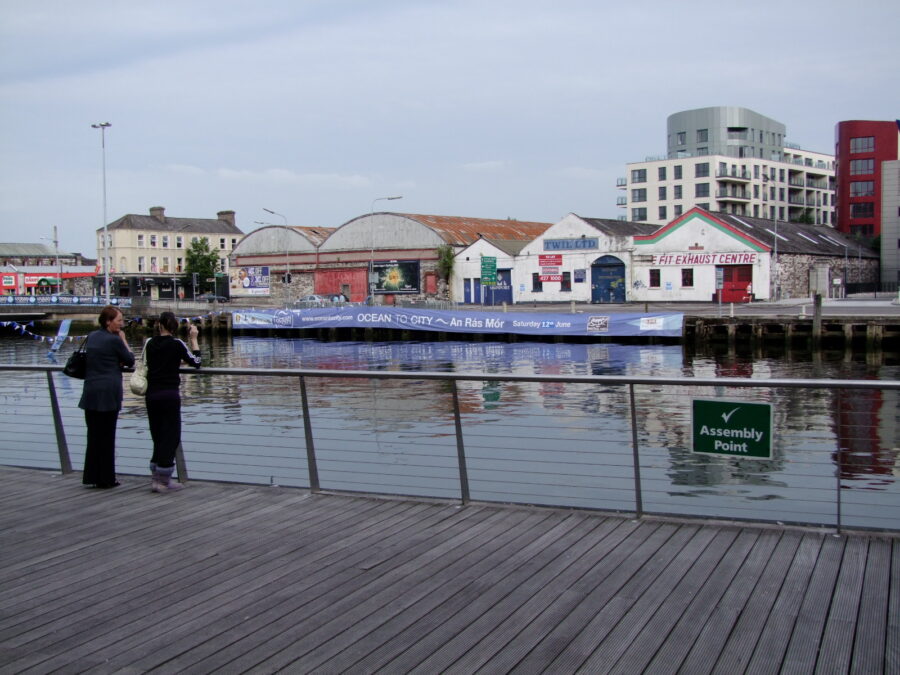
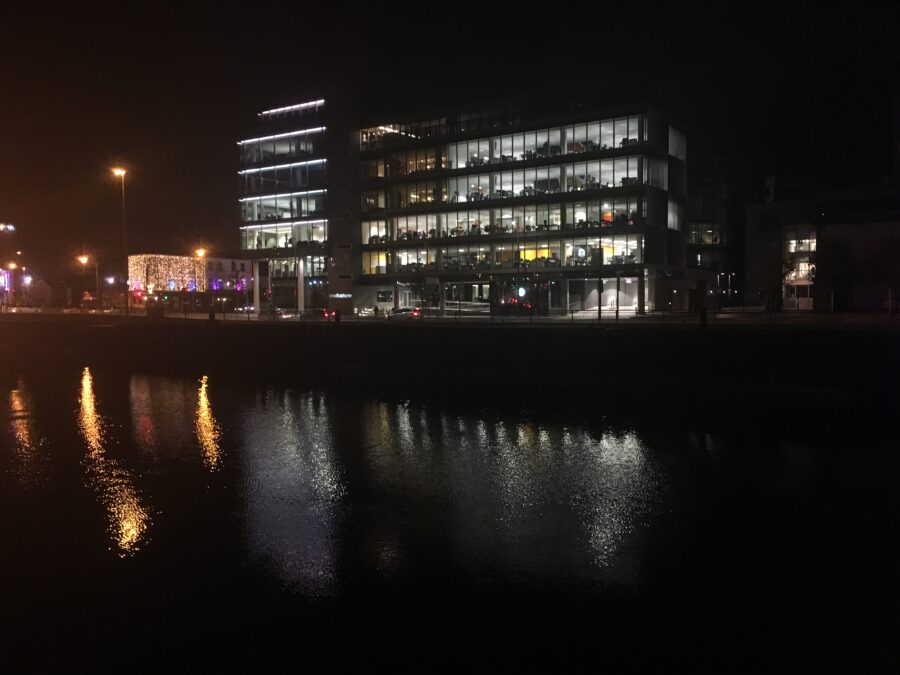
In September 2018, Cork City Council signed off on the €125 million Penrose Dock proposal from John Cleary Developments (JCD). The 250,000 sq ft development sits on a 1.8-acre site on Penrose Quay, right at the heart of the city’s docklands. It was the latest in a series of plans approved as Cork increases its standing in terms of foreign direct investment potential. Penrose Dock faces south onto the river and retains in full the historic quayside Penrose House.


Re-Imagining Cultural Cork:
In 2005, Cork became a European Capital of Culture. A huge boon to the life of the city, the award recognised Cork’s long and illustrious cultural history. Cork Opera House, The Everyman, the Cork Arts Theatre, Triskel Christchurch are also but a few of the fine performance venues in the city. Other cultural venues of note include the Kino Cinema on Washington Street and the Firkin Crane, a dance centre at Shandon.

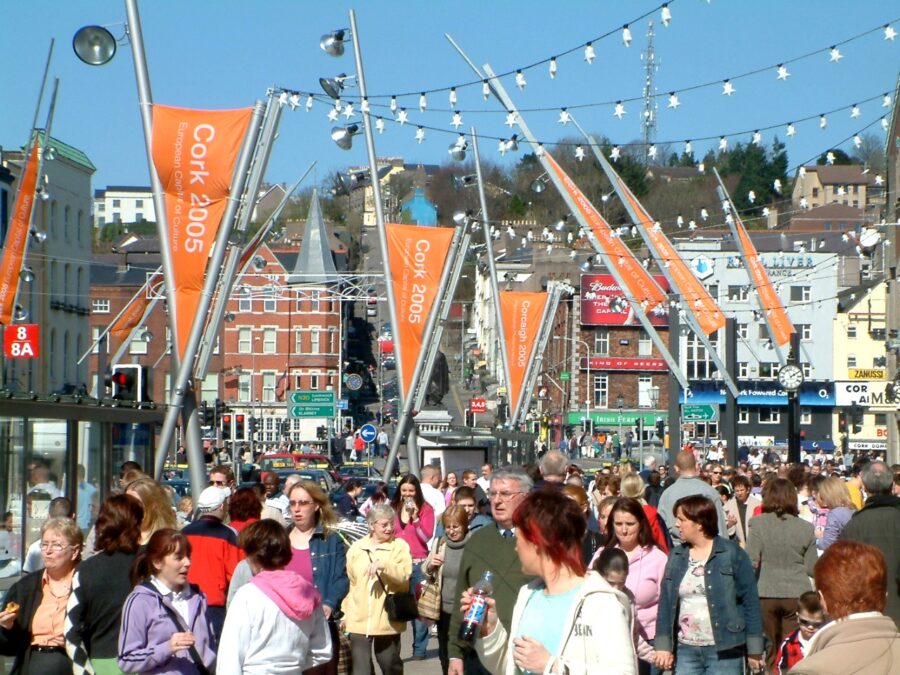
Through the generosity of Cork art patron William Horatio Crawford a magnificent extension in the Renaissance style was added to the eighteenth-century custom house in 1884 to create the Crawford Art Gallery. The present-day tower marks the seam that joins the two buildings. For the best part of a century, the Crawford School of Art, as the building was then named, served both as an art school and as a public gallery.
Today the Crawford College of Art and Design is housed in a separate building near St. Finbarre’s Cathedral. The public galleries host a collection, which includes the work of James Barry, Nathaniel Grogan, Walter Osborne, Paul Henry, Jack B Yeats, Harry Clarke and Sean Keating. The magnificent sculpture galleries were part of the 1884 extension. They were built to house an important collection of classical casts presented to the future King George IV by Pope Pius in 1818, marking the real foundation of the city’s municipal art collection. The Crawford Municipal Art Gallery continues to bring international and national artists to Cork, while building up their own important collection. It is one of the most successful and respected galleries in the country.
There are a number of thriving Arts organisations, of national and international significance, based in the city and under the Arts Council Plan of 1995, Cork was recognised as a centre of excellence in the visual arts. Encouraged by this, in 1998 Cork Corporation began developing a completely new arts facility at Wandesford Quay. The buildings chosen were protected nineteenth-century warehouse structures in need of much repair. Accordingly, with a sensitive plan, they were reconstructed, converted for artistic uses and opened to the public for viewing. Other art studios of merit include the National Sculpture Factory, established in 1989. The ‘Factory’ was opened in response to a need from artists for large-scale, well-equipped studio spaces.
Located on Tobin Street in the heart of the city, the Triskel Christchurch Centre is also a public ‘art laboratory’ for developing and presenting new and challenging work across the arts. Triskel was established in 1979, primarily as a Visual Arts Centre. Since moving to its current premises on Tobin Street, the programme has expanded to embrace music, drama, literature and education. The building work to restore and renovate Christchurch and its integration into the Triskel Arts Centre began in 2009. Two years later in April 2011 the new complex opened its doors for the very first time.

Cork has long been identified as a festival city. Annual Festivals include the Cork International Choral Festival in April, which has taken place annually since 1954 and which was originally established by Aloys G. Fleischmann. Over the years the Choral festival has gained the reputation as one of the world’s premier choral festivals; Cork International Film festival takes place every October. Screenings of feature films, documentaries and short films are hugely well attended. The Guinness Jazz festival is a much-loved annual fixture held on the October bank holiday weekend.
Other festivals include the the Midsummer Arts Festival, Fringe Theatre Festivals, Cork Folk Festival as well as literary festivals celebrating the poetry of children and the work of Frank O’Connor. The Cork Folk Festival was established in 1979 and takes place over the first weekend of September. It is firmly established as one of Ireland’s leading folk and traditional music events.
The age profile of Cork, with a huge population bulge in the under-thirty section, has created a city vibrant with student life and activity. During the academic year Cork’s full-time student population approaches 20,000, including those from University College Cork, Munster Technological University, and several smaller colleges of further education. UCC has 12,000 students and 1,700 staff and is located in a beautiful campus in the heart of the city. The college has always maintained a tradition of academic excellence across a wide range of disciplines and has established a reputation as one of the top institutions in Ireland for innovative research in the humanities, sciences, engineering, medicine and business.
The Munster Technological University is one the largest and oldest technological education centres in Ireland, inheriting a long tradition of education dating back to the early nineteenth century with its associations with the Royal Cork Institution. There are three campuses – the primary one at Bishopstown, the Crawford College of Art and Design and the Cork School of Music. The Institute also holds an annual arts festival, which has developed into a citywide event, featuring a broad range of artists.
In 2016 more regular discussion by various stakeholders arose on a long overdue City boundary extension. On 31 May 2019, following Dáil Éireann approval Cork City grow to nearly five times its current size taking in areas including Douglas, Rochestown, Ballincollig, Blarney and Glanmire. As part of this expansion, the population of the city grew by 85,000 to 210,000.
Cork is an emerging international city of scale and a national driver of economic and urban growth. Project Ireland 2040 designates the city for significant additional growth over the next 20 years, supported by large scale investment.
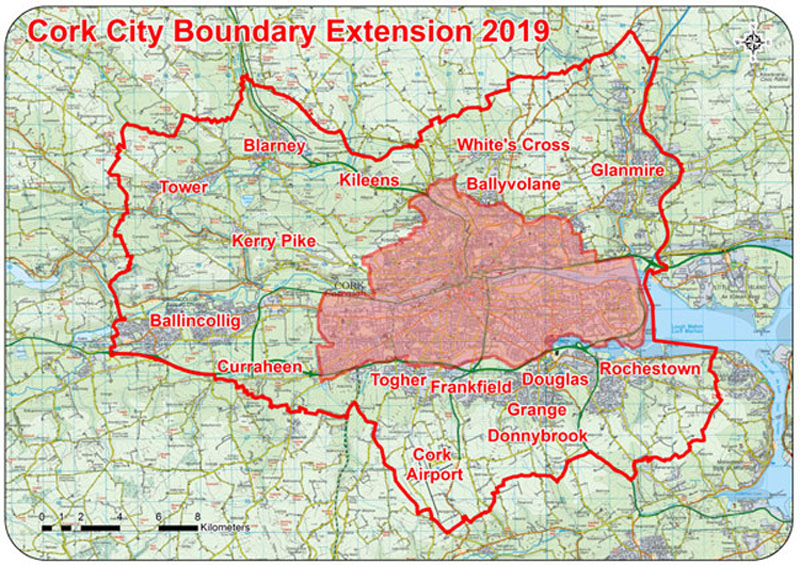
The Cork City Development Plan 2022-2028 sets out how the city can best enable this growth and investment , while continuing to be an innovative, vibrant, healthy and resilient city.
Cork has grown due to an anthology of influences. The future for Cork will witness more innovation and change and in a sense will witness the merging of past and present traditions of the city.
Read more on the plan for Cork’s future here: Interactive Overview of the Cork City Plan 2022-2028
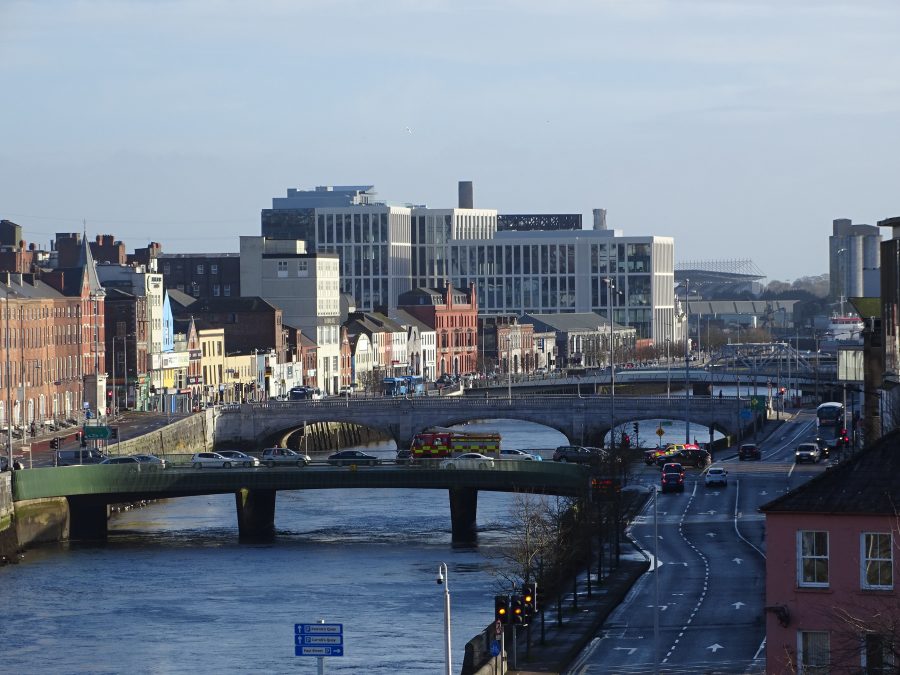
Take an armchair tour of South Docks here: History Trail, Cork’s South Docks | Cork Heritage
